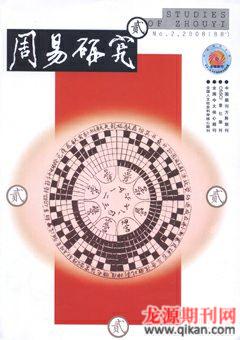上博简《周易》字词札记三则
张崇礼
摘要:本文主要讨论了上博《周易》的三个问题:第一,把第一简原释为“击”的字改释为“动”。第二,根据第九简“原”字的写法,认定尚秉和先生释“原筮”为“野筮”是正确的。第三,把第十二简原读为“终”的字,改释为“忡”。
关键词:楚简;周易;击蒙;原筮;君子有终
中图分类号:B221文献标识码:A文章编号:1003-3882(2008)02-0033-02
Three notes on the characters and words in the Zhouyi of bamboo slips manuscript collected by Shanghai Museum
ZHANG Chong-li
(College of Literature and Journalism,Shandong University,Jinan 250100,China)
Abstract:This paper mainly discusses three issues on the Zhouyi of bamboo slips manuscript collected by Shanghai Museum: the character copied on the first bamboo slip is interpreted as dong “动”,which was originally as ji “击”; its confirmed correct that Mr. SHANG Bing-he interpreted yuan shi “原筮” as ye shi “野筮”,in accordance with the form of the character yuan “原” copied on the ninth bamboo slip; the character,pronounced originally as zhong “终” on the twelfth bamboo slip,is interpreted as chong “ 忡” instead.
Key words: Chu bamboo slips manuscript; Zhouyi; ji meng; divine in open country; superior man maintains his success to the end
一
第一简《蒙》卦:“上九:A尨。”其中的A,原字形作,今本《周易》作“击”。整理者濮茅左先生释为“”,并解释说:“《睡虎地秦墓竹简·秦律·司空》‘所弗问而久之,‘字也作此形。”(濮茅左《(楚竹书)<周易>(释文考释)》,以下凡引濮先生考释皆出自此)[1]
按:濮先生用作主要证据的睡虎地秦简的“”字,原字形作,与A相比较,虽然右半从“殳”与从“攵”可以相通,但左半差别很大。从从纟的“系”字见于上博《周易》第五十四简,作,其左半中部从“田”形是非常明显的,这与睡虎地秦简的“”字相合,而A字左半中部从“目”形,差别较大,所以A并不是“”字。
A应是“动”字。这种写法的“动”也见于郭店楚简《性自命出》第十简,作(图版第61页)[2],从重从攵。“重”字见于郭店楚简《成之闻之》第十简,作(图版第49页)[2],与A字左半完全相同。
《性自命出》第九至十简说:“凡性,或动之,或逆之……凡动性者,物也;……”(释文注释第179页) [2]

